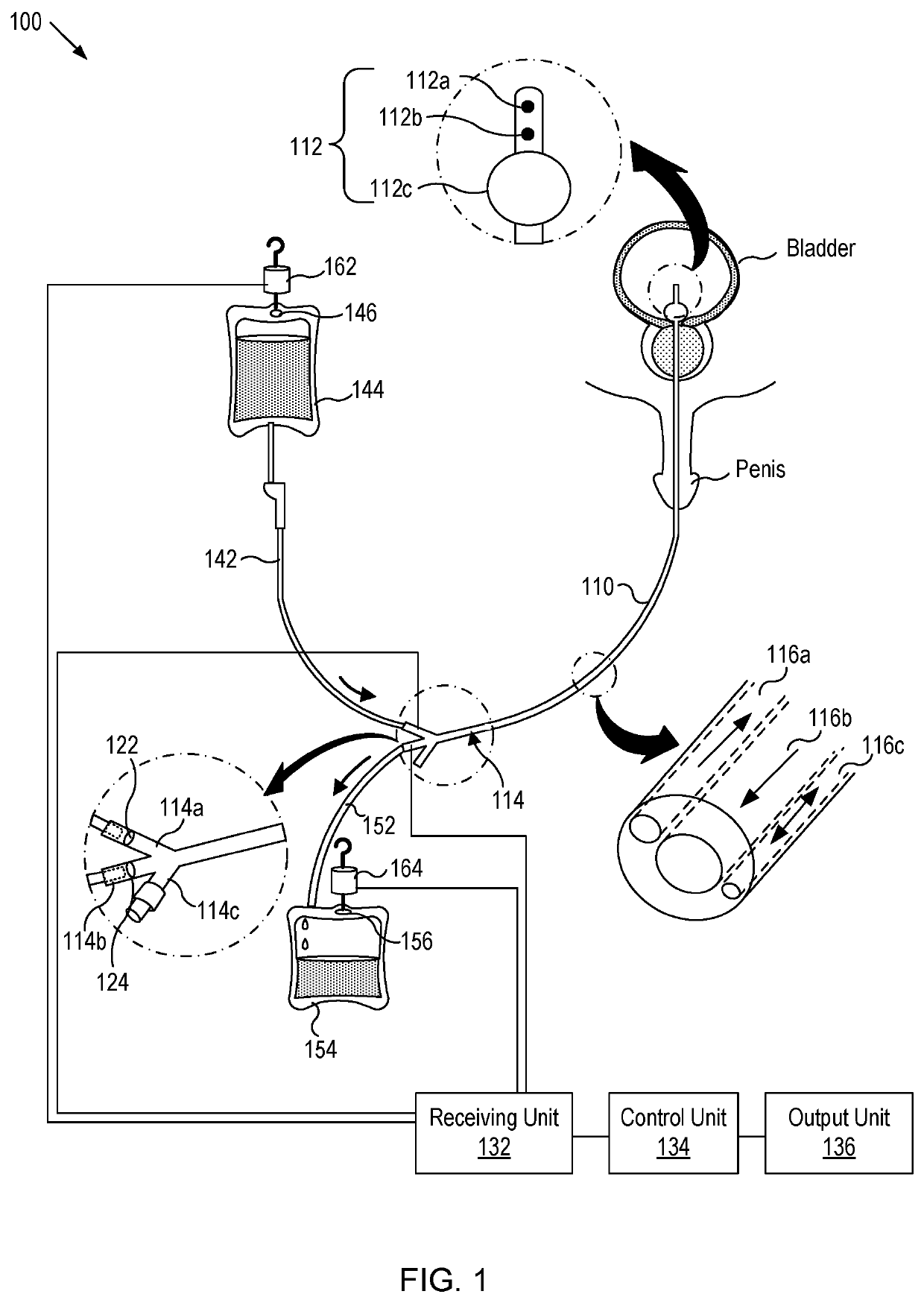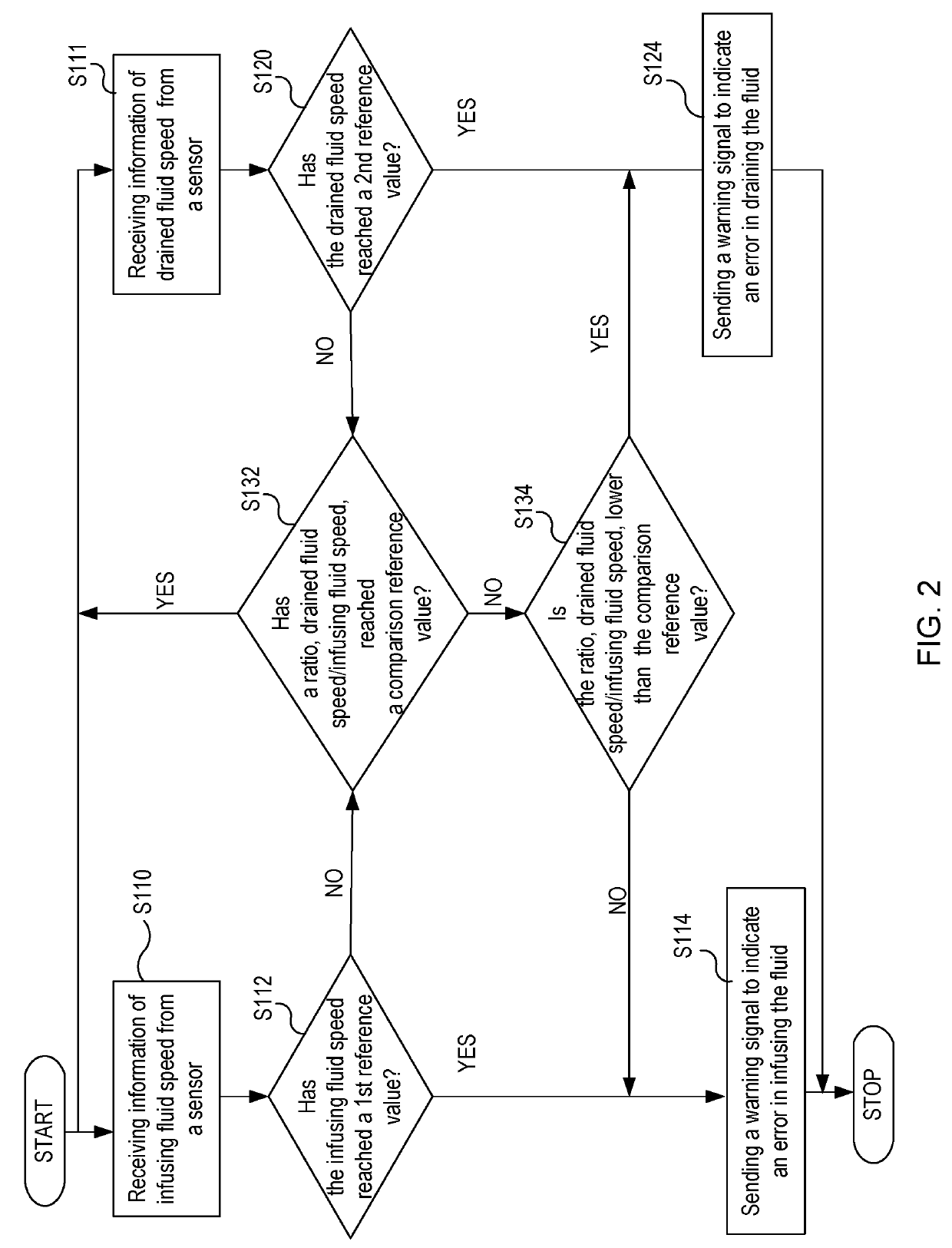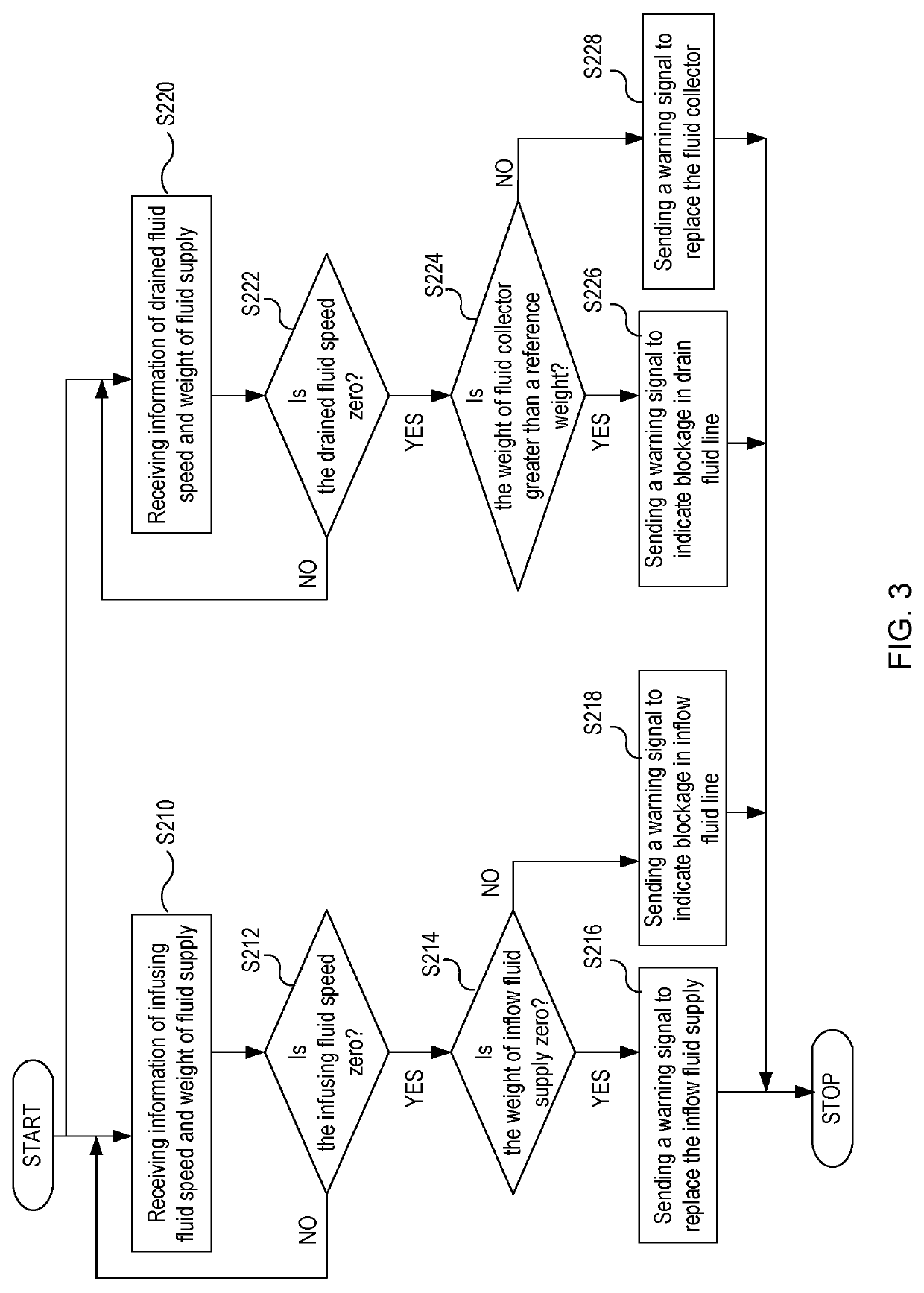Systes and methods for controlling bladder irrigation
a technology applied in the field of systes and methods for controlling bladder irrigation, can solve the problems of acute problems such as urinary retention, acute bladder overdistention, and inability to perform complete hemostasis such as applying, and achieve the effect of saving time and effort for medical professionals and reducing the concern about additional operations on patients
- Summary
- Abstract
- Description
- Claims
- Application Information
AI Technical Summary
Benefits of technology
Problems solved by technology
Method used
Image
Examples
first embodiment
[0038]FIG. 1 shows a schematic diagram of a control system according to the first embodiment of the present disclosure. As depicted, the continuous bladder irrigation control system (or shortly control system) 100 includes a three-way urethral catheter 110, flow speed sensors 122 and 124, a receiving unit 132, a control unit 134 and an output unit 136.
[0039]In embodiments, the three-way urethral catheter 110 has a total of three lumens or passageways in its catheter design. It includes an inside tip portion 112 and a port portion 114. The inside tip portion 112 is a portion to be inserted into the bladder through the urethra of the patient. The port portion 114 includes an inflow funnel serving for a first port 114a through which a fluid is supplied into the bladder, a drainage funnel serving for a second port 114b through which the fluid in the bladder is drained from the bladder, and a balloon funnel serving for a third port 114c for inflating the balloon 112c at the inside tip of...
second embodiment
[0072]FIG. 4 shows a schematic diagram of a control system 200 according to the second embodiment of the present disclosure. As depicted, the continuous bladder irrigation control system (or shortly control system) 200 includes a catheter 110, a flow regulator 142, a pressure sensor 222, a color sensor 224, a receiving unit 232, a control unit 234 and an output unit 236. In the following sections, the description of the elements common to both the control systems 100 and 200 will not be repeated since the common elements have the similar structure and functions in both systems.
[0073]The pressure sensor 222 measures the internal pressure of the bladder and located near the first port 114a of the catheter 110. In alternative embodiments, the pressure sensor 222 may be located in the first fluid line 142 between the fluid supply 144 and the first port 114a. The pressure sensor 222 may be based on (but not limited to) mechanical, electrical, or semiconductor technology.
[0074]FIG. 5 show...
third embodiment
[0098]FIG. 8 shows a schematic diagram of a control system (or shortly control system) 300 according to a third embodiment of the present disclosure. As depicted, the control system 300 includes valves 310a, 310b, a receiving unit 332, a control unit 334, and an output unit 336. In the following sections, the description of the elements common to both the control systems 100 and 300 will not be repeated since the common elements have the similar structure and functions in both systems.
[0099]The control system 300 includes a plurality of inflow fluid supplies (or, shortly fluid supplies) 144a, 144b and a plurality of fluid collectors 154a, 154b. The control system 300 further includes a plurality of weight sensors 162a, 162b for measuring the weights of the plurality of fluid supplies 144a, 144b, respectively, and a plurality of weight sensors 164a, 164b for measuring the weights of the plurality of fluid collectors 154a, 154b, respectively.
[0100]The plurality of fluid supplies 144a,...
PUM
 Login to View More
Login to View More Abstract
Description
Claims
Application Information
 Login to View More
Login to View More - R&D
- Intellectual Property
- Life Sciences
- Materials
- Tech Scout
- Unparalleled Data Quality
- Higher Quality Content
- 60% Fewer Hallucinations
Browse by: Latest US Patents, China's latest patents, Technical Efficacy Thesaurus, Application Domain, Technology Topic, Popular Technical Reports.
© 2025 PatSnap. All rights reserved.Legal|Privacy policy|Modern Slavery Act Transparency Statement|Sitemap|About US| Contact US: help@patsnap.com



